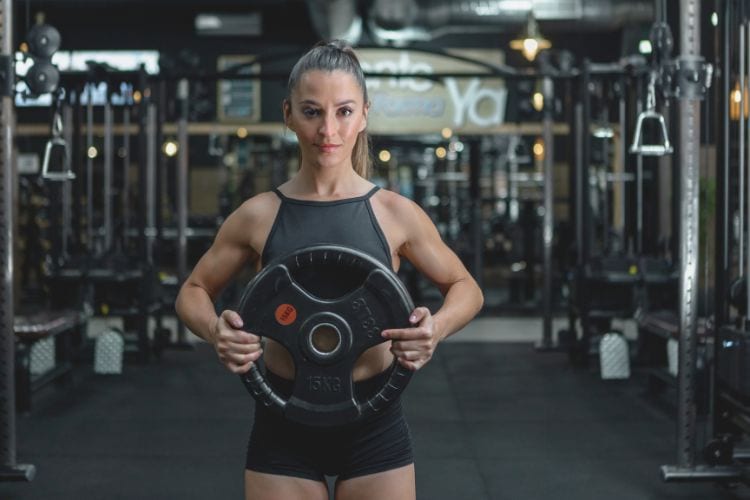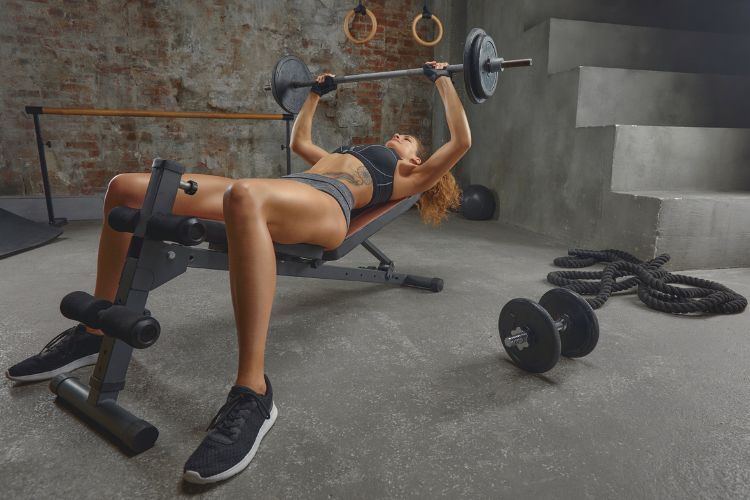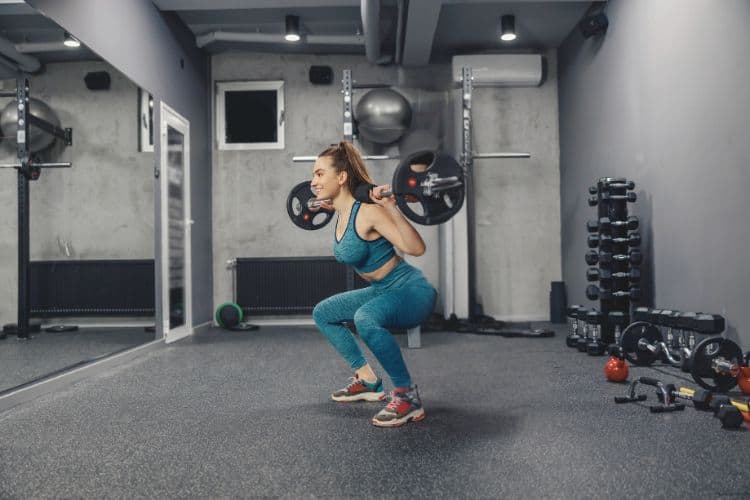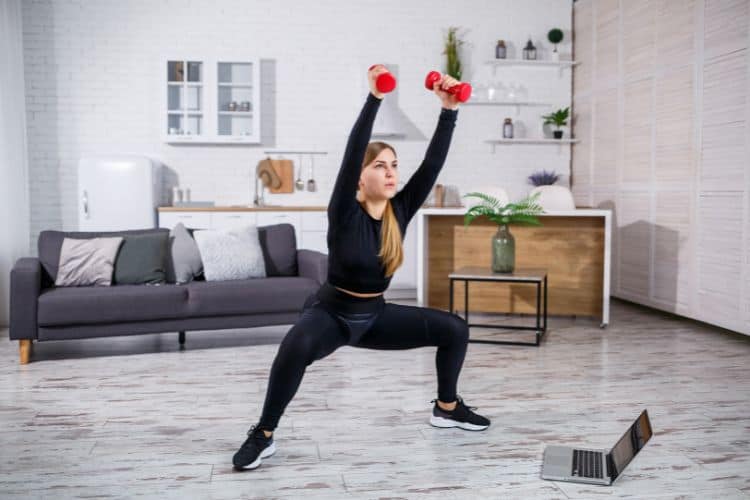Sign up for workout ideas, training advice, reviews of the latest gear and more.






If you’re short on time but want maximum results from your workouts, a 35-minute home dumbbell workout routine can be your go-to fitness solution. With just a pair of dumbbells and your bodyweight, you can sculpt muscles, improve endurance, and burn fat — all from the comfort of your home. Whether you’re a beginner or advanced, this routine is scalable, efficient, and designed to boost your strength and metabolism in under 40 minutes.
In today’s fast-paced world, finding time to hit the gym can be challenging. A 35-minute dumbbell workout at home helps you stay consistent without compromising your schedule. Research shows that even short-duration strength workouts can produce significant improvements in muscle tone, fat loss, and cardiovascular health.
Dumbbells are incredibly versatile. With the right programming, you can work every major muscle group — chest, back, arms, legs, glutes, and core — within 35 minutes. This routine uses compound movements to engage multiple muscles simultaneously, maximizing efficiency.
All you need is a pair of dumbbells (adjustable or fixed-weight). There’s no need for bulky machines or extensive space. Plus, training at home gives you flexibility to exercise on your terms — no waiting for equipment or dealing with crowded gyms.
Pro Tip: Beginners can start with 5–10 lb dumbbells. Intermediate to advanced individuals may use 15–35 lb dumbbells for strength gains.
This workout is structured into three primary segments:
Each part plays a critical role in ensuring you get the most out of your training while preventing injury and promoting recovery.
Before diving into lifting weights, it’s essential to warm up your muscles, increase your heart rate, and activate your joints. Spend 5 minutes doing the following dynamic movements:
This warm-up increases blood flow and primes your body for lifting.
The main workout consists of 5 circuits. Each circuit includes 2 compound exercises, performed back-to-back. You’ll do 3 sets of each circuit, with 30 seconds rest between sets and 60 seconds between circuits.
Hold one dumbbell at chest height. Squat down, keeping your chest upright and knees in line with toes.
Muscles Targeted: Quads, glutes, hamstrings, core
Hold two dumbbells in front of your thighs, hinge at the hips with a slight knee bend, and lower the weights down your legs.
Muscles Targeted: Hamstrings, glutes, lower back
Complete 3 rounds before moving to the next circuit.
From a standing or seated position, press two dumbbells overhead with control, then lower.
Muscles Targeted: Shoulders, triceps, upper chest
Place one hand and knee on a bench or chair. Pull the dumbbell up to your side.
Muscles Targeted: Back, biceps
Hold two dumbbells at shoulder height. Perform a squat and then push the weights overhead as you rise.
Muscles Targeted: Legs, glutes, shoulders, core
In a plank position with hands on dumbbells, row one arm up at a time while maintaining plank form.
Muscles Targeted: Core, back, shoulders, arms
Lie on your back with a dumbbell on your hips. Press your hips up and squeeze your glutes at the top.
Muscles Targeted: Glutes, hamstrings, core
Sit with knees bent, holding a dumbbell at chest level. Twist side to side.
Muscles Targeted: Obliques, abs
Perform a squat, then curl the weights and press overhead in one flow.
Muscles Targeted: Total body (legs, arms, shoulders, core)
Hold light dumbbells in each hand and do high knees in place, driving your arms in sync.
Muscles Targeted: Cardio, coordination, core
This finisher circuit will elevate your heart rate and torch calories to cap off the workout.
A proper cooldown helps bring your heart rate back to normal, reduces soreness, and increases flexibility. Focus on stretching the major muscle groups:
Don’t skip this — your body will thank you later.
The ideal dumbbell weight should challenge you in the last few reps but not compromise your form. As you get stronger, progressively overload by increasing weight or reps.
Poor form increases the risk of injury. Use a mirror or record yourself to check your posture. Perform each rep with control.
These segments are essential for performance and recovery. They also help prevent injury and improve mobility.
Drink water before, during, and after the workout. Hydration supports muscle function and endurance.
Doing this routine 3–4 times per week is ideal. Allow at least one day of rest between sessions to let your muscles recover and grow.
| Day | Workout Type |
|---|---|
| Monday | 35-Minute Dumbbell Full-Body |
| Tuesday | Active Recovery (Walk or Yoga) |
| Wednesday | 35-Minute Dumbbell Workout |
| Thursday | Rest Day |
| Friday | 35-Minute Dumbbell Workout |
| Saturday | Bodyweight HIIT or Stretching |
| Sunday | Rest or Light Mobility Work |
Combining strength and cardio moves like thrusters, renegade rows, and high knees maximizes calorie burn while stimulating muscle growth.
Many of these movements — such as Russian twists and planks — engage your core, helping to improve posture and reduce lower back pain.
Short, intense workouts elevate your metabolism and trigger EPOC (Excess Post-exercise Oxygen Consumption), meaning your body keeps burning calories even after the workout ends.
Dumbbell workouts mimic real-life movements, helping you build functional strength that carries over into daily activities like lifting, bending, and reaching.
Absolutely. A well-structured 35-minute dumbbell workout can deliver results equal to or better than an hour at the gym, especially when you’re consistent. It’s not about how long you work out — it’s about how smart and focused your training is.
So grab your dumbbells, set your timer, and commit to moving with purpose. This efficient, effective home workout will help you achieve your fitness goals without stepping foot in a gym.
Want more effective workouts?
Subscribe to our blog or follow us on Pinterest for new routines, challenges, and fitness tips!
Stay up to date on the latest women’s health, fitness and lifestyle trends and tips.